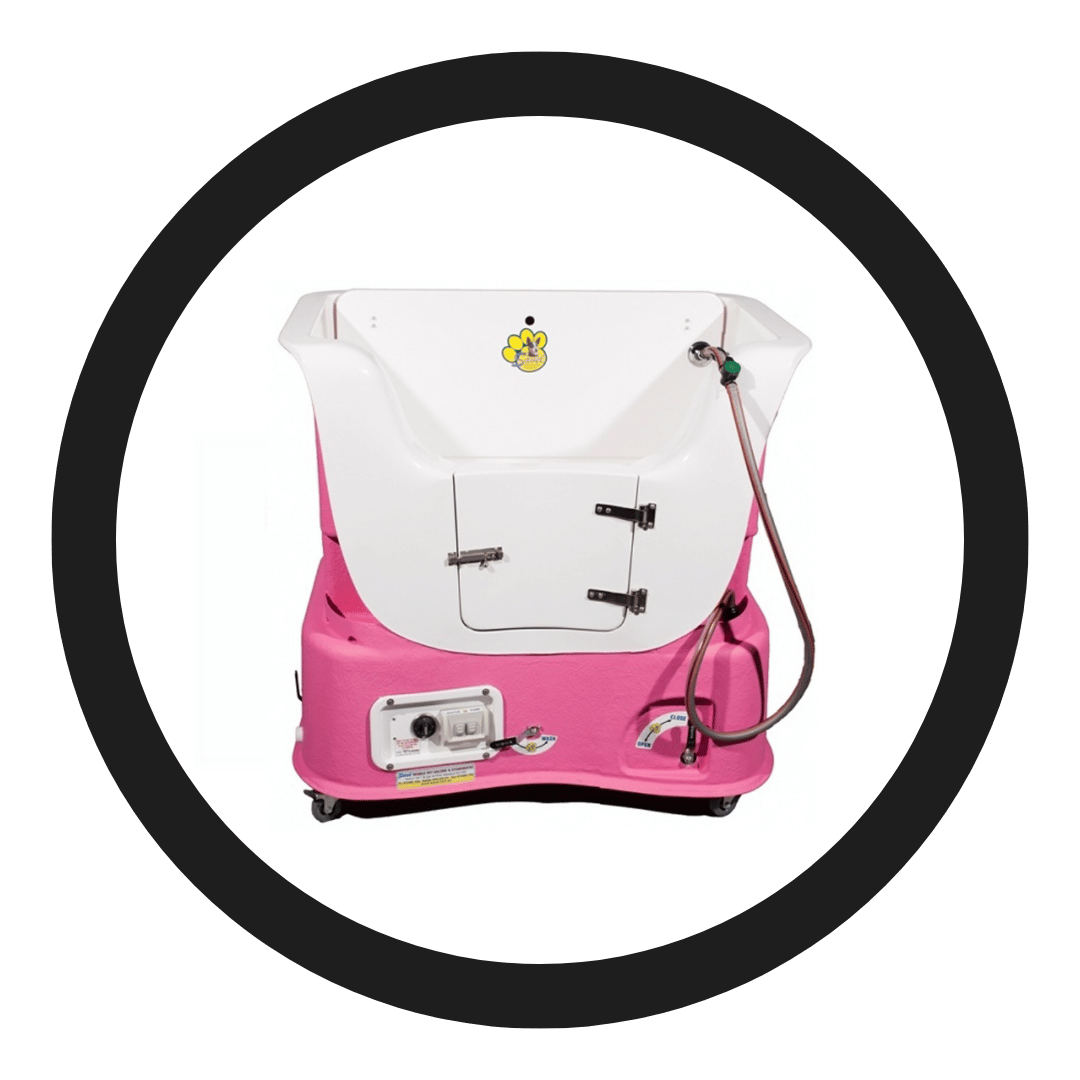Drying Procedure Overview
Using a chamois will reduce drying time. Do not rub the chamois on the dog, instead lightly squeeze the dog to remove excess water. Towel dry and start your dryer on low so the dog has time to adjust to the drying process. This can be challenging for many dogs, be patient and kind. Happy Hoodies protect the dog from noise and reduce air flow around the head and ears. A hand-held dryer is best for drying the face. You simply cannot scissor a head that is damp.
Fluff drying is a technique many groomers use to achieve a straight coat. It is best practice to make sure the dog is offered water and a break after this process.
Your dog is now ready to be styled. The dog will be brushed, clipped and styled according to the breed or owners request.
In this video below take a closer look at drying a dog's head and dryer maintenance. Please note that placing a stocking over a dryer's intake area is not recommended by the manufacturer but can be a good way to minimise hair and dander entering the filter. Always follow the manufacturer's instruction and proceed with caution.
High Velocity Drying
High Velocity (HV) drying is a great time saver – it shortens pet drying time, which then saves money. Use HV drying to blow off excess water in the bath, also known as spit drying. An HV dryer can also be used to loosen the undercoat of a freshly washed dog.
Knowing how to introduce the dog to the drying equipment and making them comfortable during the process is very important. It is suggested that you start the dryer on a low speed and as the dog relaxes, increase the speed. Know that heat and fan settings, and nozzle selection, is also important. The heat will either have a ‘high’ or ‘low’ setting. On newer models, there is a dial to select the temperature. Speed is the same, normally with a dial to determine how fast or slow. The dryers come with a standard drying nozzle. For safety precautions, defiantly do not use HV dryers for cage drying as they are too powerful and can cause overheating and stress to a dog.
Fluff Drying
Fluff drying uses a slower hair dryer with open air to produce a coat which is full and plush with a "powder puff” look that is very attractive. A lot of customers like this look because it gives more of a ‘teddy bear’ image. Fluff drying is popular for Poodles, Cavoodles, Bichons, etc.
Fluff drying is usually performed after the dog is partially dried with a HV dryer, eliminating excess water. Fluff drying is designed as a slower, more open-air dry. This technique is much less stressful for the dog and should be used if a dog reacts badly to the HV dryer. But be warned – fluff drying can take much longer than using the HV dryer.
The fluff drying technique can be used to dry sensitive areas, such as the ears, face and tail.
Line Drying
Line drying is the process we use for double and heavy coated dogs. The process helps to remove dead hair and ensures that the entire dog is properly dried for brushing out afterwards. Watch the Samoyed video in the Double Coat section for further instruction.
Cage Drying
This practice is no longer common in the modern grooming world. It can be extremely dangerous if a dog is left unattended. Pay attention to the dogs needs if you want to use this method.
Use a HV dryer first to eliminate excess water, then a cage dryer on low heat. Then place the dog on a table and finish by fluff drying and brushing.
Safety is crucial when cage drying. Monitor the dog closely to avoid overheating and heat stress. Use extra caution when cage drying dogs with very short faces and protruding eyes, such as Pekingese, Pugs and Bulldogs, which are breeds prone to heat stress and eye injuries.
Be aware of the symptoms of heat stress; excessive panting, noisy breathing, profuse salivation, general weakness and higher temperature. If you see these symptoms, stop drying immediately and check the dog.
REMEMBER
A dog can only regulate its body temperature by panting - if the dog is breathing in warm air, it will be working hard to regulate its body temperature. Always monitor dogs during the drying process and where possible, give the dog a break and fresh water.











